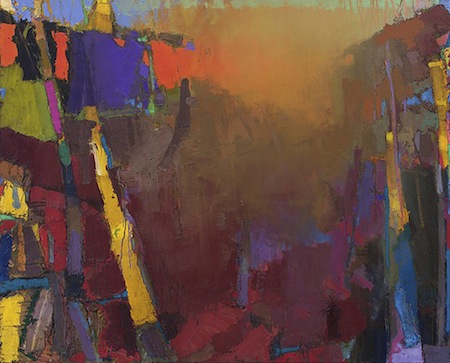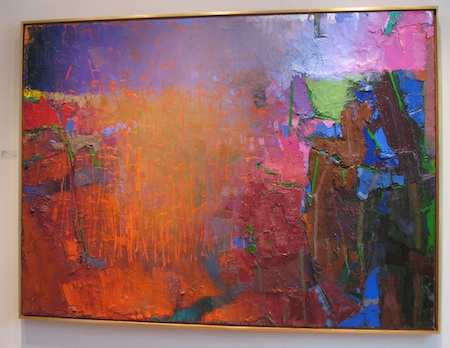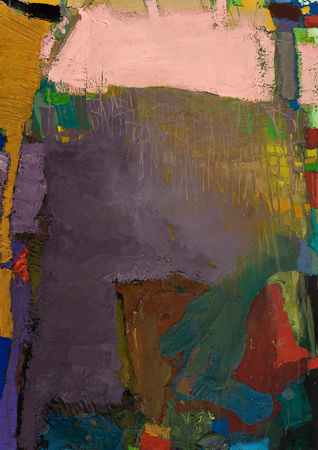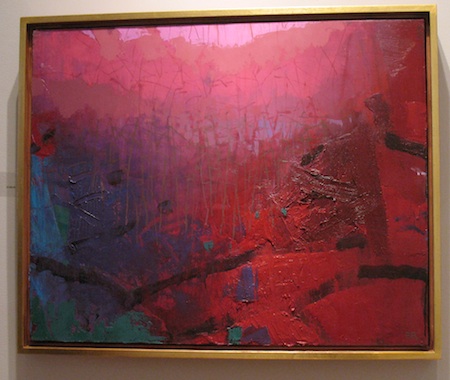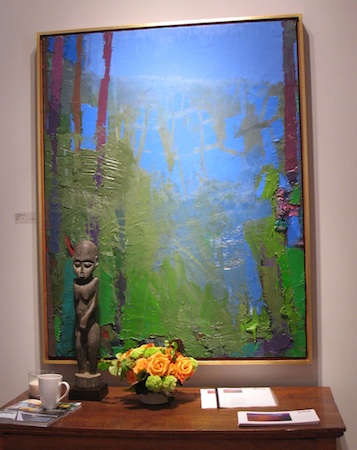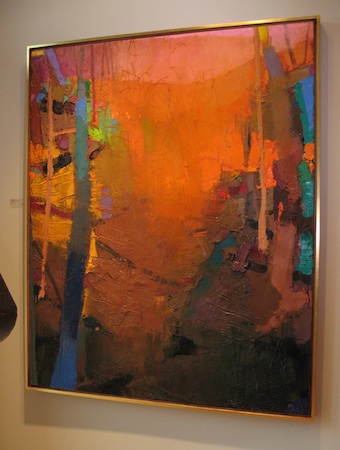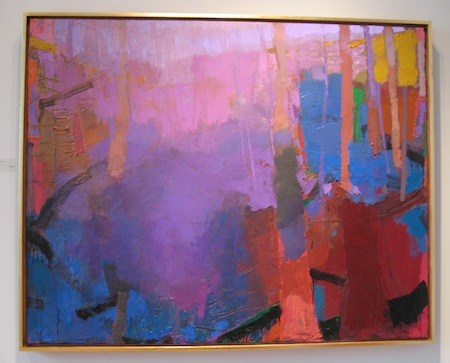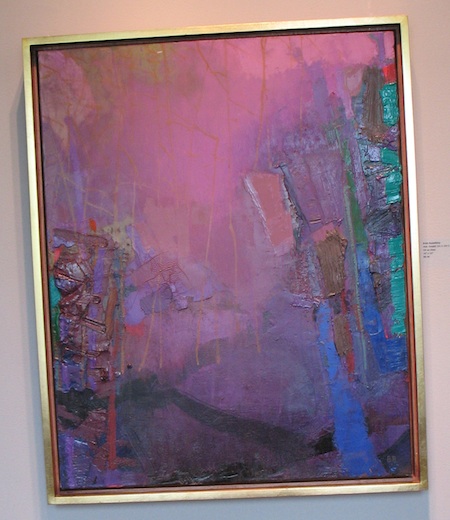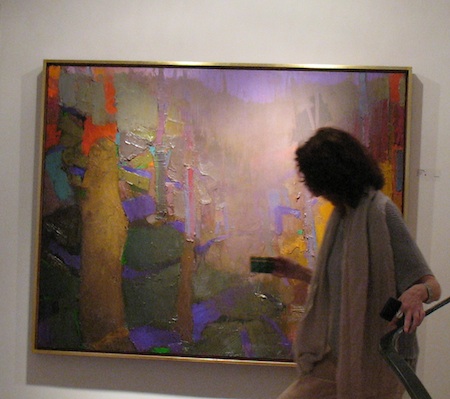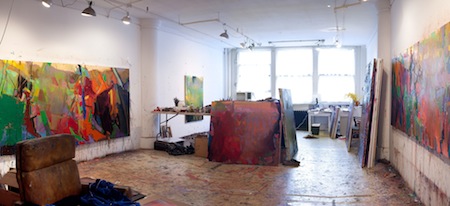Brian Rutenberg gave an artist’s talk on Saturday, April 25, after the prior night’s opening for his show at Timothy Tew Gallery in Atlanta.
Rutenberg’s large abstract paintings are pure beauty and luscious paint. The artist isn’t afraid of color and he favors using generous amounts of paint, slabbed onto the Belgian linen he uses, with his hand or palette knife. During his talk he reminisced about growing up in Myrtle Beach and the lowlands of South Carolina. “Humidity made me a painter”, he said. Attuned to color as a child, he would bury his head in azalea bushes, breathing in his southern heritage.
“Nightcrawler” below, 55″x 68″, 2015. Photo courtesy Tews Gallery.
 At twelve, Rutenberg copied Manet’s sea battle paintings in an effort to learn spatial displacement. He spoke of building virtual rocks out of pillows to duplicate the way that Manet placed his objects in the paintings. Rutenberg’s tactile paintings depict place. While he may appear to be an abstractionist, he realizes the sky and earth as standard conventions for a landscape painter, and isn’t hesitant to admit to the same thing in his own work.
At twelve, Rutenberg copied Manet’s sea battle paintings in an effort to learn spatial displacement. He spoke of building virtual rocks out of pillows to duplicate the way that Manet placed his objects in the paintings. Rutenberg’s tactile paintings depict place. While he may appear to be an abstractionist, he realizes the sky and earth as standard conventions for a landscape painter, and isn’t hesitant to admit to the same thing in his own work.
In the talk, Rutenberg stated that it’s important for a painter to define his/her “job”, and to craft a place in which to do that. The fact that “no one cares” is a liberating premise for any artist, mistakes are inevitable. Rutenberg cherishes the notion of failure and says that success, to him, is defined by curiosity and effort. “Every painting fails before it gets better… and it never looks the way it does in my mind….you have to screw up if you want to be a painter. Do everything you can within a series of limitations.” He also insists that too much technique or too much intellectualism, as well as too much “craziness”, doesn’t work. His affability betrays a dedicated workmanship in both the craft of painting and in the intensity of his ambition; Rutenberg has shown yearly since the late 1980s, after receiving his MFA from the School of Visual Arts in New York.
His influences are surprising; he admitted that Thomas Gainsborough is one of his favorite painters, with Tiepolo another influence. The Canadian Group of Seven was more obvious to my mind, at least for his color palette, along with the Scottish Colorists. He didn’t mention Hans Hoffmann, who seems a natural influence based on Rutenberg’s juxtapositions and rectangles of vivid and bright color. I also find some Diebenkorn similarities in swatches of odd colors – like a pink flesh tone in a horizon that is framed by ochre on the left with smaller red and acid green rectangles on the opposite vertical side that ring almost of Klimt. This particular painting (below) was not featured in the show, but it’s worth noting for Rutenberg’s versatility of palette.
Fascinating as well, is his affection for the pianist Glenn Gould, whose quote can be found his website: “The purpose of art is the gradual, lifelong construction of a state of wonder and serenity.” Rutenberg’s works commissioned by the Glenn Gould Foundation are more circular in composition, and quite different from the more current vertically striated paintings. He does not elaborate on which of Gould’s interpretations he favors.
While Rutenberg doesn’t usually paint on site, he does make sketches that he rarely shows. And although he calls himself a landscape painter, I detect a symbolism in the pictorial haze that permeates the mid part of his canvases. He mentioned the quality of light that came through the Spanish moss hanging on the trees of that southern home. The softening serves as a contrast to the harsher edges of what may be a response to a more dense, urban landscape. Rutenberg has lived in New York City since he was 21, and has his studio there.
Some of his works are bright, pop in your face vivid. Others seem moodier, with dark undercurrents of tonal values. The current paintings in this show offer a complex palette; juxtapositions of muddied earth tones and rusted oranges with fantastic jewel like reds and violets, which segue into deep and mysterious dark teals.
Brian’s studio in New York City.
You can find more of Rutenberg’s work on his website and a 2011 review by critic Diane Thodos on the blog artcritical.com.
Rutenberg offers videos about his process here. Timothy Tew’s gallery can be found in the Peachtree Hills neighborhood of Atlanta.

